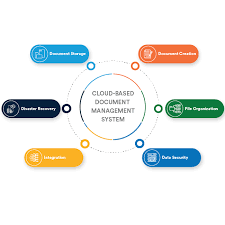IBM Software Engineer
The Role of an IBM Software Engineer
IBM, a global technology company, offers exciting opportunities for software engineers to work on cutting-edge projects that drive innovation and impact millions of users worldwide.
Responsibilities of an IBM Software Engineer
As an IBM software engineer, you will be responsible for designing, developing, and testing software solutions that meet the needs of clients and contribute to IBM’s reputation as a leader in the tech industry. Your day-to-day tasks may include:
- Collaborating with cross-functional teams to define project requirements
- Writing clean, efficient code using programming languages such as Java, Python, or C++
- Testing and debugging software applications to ensure they meet quality standards
- Implementing new features and enhancements based on user feedback
- Staying up-to-date with emerging technologies and best practices in software development
Skills Required
To excel as an IBM software engineer, you should possess a combination of technical skills, problem-solving abilities, and teamwork. Some key skills required for this role include:
- Proficiency in programming languages and development tools
- Strong analytical skills to troubleshoot complex issues
- Excellent communication skills for effective collaboration with team members and clients
- Adaptability to work in a fast-paced environment with evolving project requirements
- A passion for learning and continuous improvement in software engineering practices
Career Growth at IBM
IBM values career development and provides opportunities for software engineers to enhance their skills through training programs, mentorship, and exposure to diverse projects. With a strong emphasis on innovation and creativity, IBM fosters a culture where employees can thrive and make meaningful contributions to the tech industry.
In Conclusion
Becoming an IBM software engineer opens doors to a dynamic career path filled with challenges and rewards. If you are passionate about technology and eager to make a difference through your work, consider exploring the opportunities available at IBM as a software engineer.
Top 9 Benefits of Being an IBM Software Engineer
- Opportunity to work on cutting-edge projects
- Access to advanced technology and tools
- Collaborative work environment with talented professionals
- Career development and growth opportunities
- Global reach and impact through IBM’s diverse client base
- Competitive salary and benefits package
- Prestigious reputation of working for a leading tech company
- Training programs to enhance technical skills and knowledge
- Innovation-driven culture that encourages creativity
7 Challenges Faced by IBM Software Engineers
- High pressure to meet project deadlines
- Limited work-life balance during peak periods
- Complex organizational structure can slow decision-making
- Limited opportunities for remote work
- Possibility of frequent travel for client engagements
- Competitive environment may lead to long working hours
- Technical challenges can be demanding and require continuous learning
Opportunity to work on cutting-edge projects
Working as an IBM software engineer provides the unique opportunity to engage with cutting-edge projects that are at the forefront of technological innovation. IBM is renowned for its commitment to pushing the boundaries of what’s possible, which means engineers often find themselves working on pioneering technologies such as artificial intelligence, quantum computing, and cloud solutions. This exposure not only enhances technical skills but also allows engineers to contribute to projects that have a significant impact on industries and society at large. Being part of such transformative work is both professionally rewarding and intellectually stimulating, offering engineers a chance to leave their mark on the future of technology.
IBM software engineers benefit from access to advanced technology and tools that empower them to create innovative solutions and stay at the forefront of the tech industry. With cutting-edge resources at their fingertips, such as state-of-the-art development platforms and specialized software, IBM engineers can tackle complex challenges with efficiency and precision. This access not only enhances their technical skills but also enables them to explore new possibilities, experiment with emerging technologies, and push the boundaries of what is achievable in software development.
Collaborative work environment with talented professionals
IBM software engineers benefit from a collaborative work environment that brings together talented professionals from diverse backgrounds. This setting fosters creativity, innovation, and knowledge sharing, allowing team members to leverage each other’s expertise to tackle complex challenges and deliver high-quality solutions. By working alongside skilled colleagues, IBM software engineers have the opportunity to learn from one another, grow professionally, and collectively achieve success in driving technological advancements within the company.
Career development and growth opportunities
IBM offers its software engineers exceptional career development and growth opportunities. With a strong emphasis on continuous learning and skill enhancement, IBM provides various training programs, mentorship opportunities, and exposure to diverse projects. This enables software engineers to expand their expertise, explore new technologies, and advance their careers within the company. The supportive environment at IBM encourages professional growth, allowing software engineers to thrive and reach their full potential in the ever-evolving tech industry.
Global reach and impact through IBM’s diverse client base
IBM software engineers enjoy a unique advantage of global reach and impact due to IBM’s diverse client base. By working on projects that cater to clients from various industries and regions around the world, IBM software engineers have the opportunity to make a significant difference on a global scale. This exposure not only broadens their technical expertise but also allows them to understand diverse business needs and cultural nuances, ultimately contributing to their professional growth and making their work at IBM both challenging and rewarding.
Competitive salary and benefits package
IBM offers its software engineers a competitive salary and benefits package that reflects the company’s commitment to attracting and retaining top talent in the tech industry. In addition to a competitive base salary, IBM provides comprehensive benefits such as healthcare coverage, retirement plans, paid time off, and professional development opportunities. This robust compensation package not only rewards employees for their hard work and dedication but also ensures their overall well-being and satisfaction within the organization.
Prestigious reputation of working for a leading tech company
Working as an IBM software engineer offers the prestigious advantage of being associated with a renowned tech company at the forefront of innovation. IBM’s legacy as a global leader in technology not only enhances one’s professional credibility but also provides opportunities to collaborate on groundbreaking projects and contribute to cutting-edge solutions that shape the future of the industry. Being part of such a prestigious organization opens doors to a network of industry experts, resources, and experiences that can propel one’s career to new heights.
Training programs to enhance technical skills and knowledge
IBM offers valuable training programs to empower its software engineers with the latest technical skills and knowledge. These programs are designed to enhance the expertise of engineers, keeping them abreast of emerging technologies and industry trends. By investing in continuous learning and development, IBM ensures that its software engineers are equipped to tackle complex challenges and deliver innovative solutions that drive the company’s success in the fast-paced tech landscape.
Innovation-driven culture that encourages creativity
IBM fosters an innovation-driven culture that actively encourages creativity among its software engineers. By promoting a mindset of exploration and experimentation, IBM empowers its employees to think outside the box, propose novel solutions, and push the boundaries of technology. This approach not only fuels continuous innovation within the company but also inspires software engineers to unleash their full creative potential, leading to groundbreaking advancements in the tech industry.
High pressure to meet project deadlines
One significant challenge faced by IBM software engineers is the high pressure to meet project deadlines. The fast-paced nature of the tech industry and the demand for timely delivery of software solutions can create a stressful work environment for engineers. Meeting strict project timelines often requires long hours, intense focus, and effective time management skills. The pressure to deliver on time can impact work-life balance and lead to burnout if not managed effectively. Despite the challenges, IBM software engineers learn to thrive under pressure, honing their problem-solving abilities and resilience in the face of tight deadlines.
Limited work-life balance during peak periods
During peak periods, IBM software engineers may experience a con of limited work-life balance. The demanding nature of projects and deadlines can lead to long hours and intense workloads, potentially impacting personal time and well-being. Balancing professional commitments with personal life during these busy periods can be challenging, requiring effective time management and prioritization to maintain a healthy work-life harmony. IBM may need to address this issue by implementing strategies to support employees in managing their workload more effectively and promoting a sustainable work environment for its software engineers.
Complex organizational structure can slow decision-making
The complex organizational structure at IBM can sometimes hinder the efficiency of decision-making processes for software engineers. With multiple layers of management and intricate communication channels, important decisions may take longer to be made, leading to potential delays in project timelines. Software engineers may find it challenging to navigate through the hierarchy to get approvals or feedback, which can impact their ability to respond quickly to changing requirements or address critical issues in a timely manner. Streamlining communication and decision-making processes within the organization could help mitigate this con and improve overall productivity for IBM software engineers.
Limited opportunities for remote work
One notable drawback for IBM software engineers is the limited opportunities for remote work. Due to the nature of some projects requiring close collaboration and on-site presence, remote work options may be restricted. This limitation can impact work-life balance and flexibility for individuals who prefer or require remote work arrangements. It may also hinder access to a broader talent pool and limit the ability to accommodate diverse working preferences among employees.
Possibility of frequent travel for client engagements
One potential downside of being an IBM software engineer is the possibility of frequent travel for client engagements. While travel can provide valuable opportunities to work closely with clients and gain firsthand insights into their needs, it may also lead to challenges such as time away from home, long hours on the road or in transit, and disruptions to work-life balance. Constantly being on the move can be physically and mentally demanding, requiring adaptability and resilience to navigate different locations and time zones while maintaining productivity and focus on project deliverables.
Competitive environment may lead to long working hours
In the realm of IBM software engineering, one notable drawback is the fiercely competitive environment that can often result in prolonged working hours. The pressure to meet project deadlines and surpass performance expectations may lead software engineers to dedicate extensive time and effort to their tasks, potentially sacrificing work-life balance. The demanding nature of the industry can create a culture where long working hours become the norm, impacting the well-being and overall satisfaction of individuals in this role. It is crucial for both employees and employers to prioritize sustainable work practices to mitigate the negative effects of extended work hours on productivity and mental health.
Technical challenges can be demanding and require continuous learning
One notable challenge faced by IBM software engineers is the demanding nature of technical tasks, which often require a high level of expertise and continuous learning. Keeping up with evolving technologies and industry trends can be a significant challenge, as software engineers must constantly adapt to new tools and methodologies to meet project requirements. This ongoing learning process can be time-consuming and mentally taxing, but it is essential for maintaining proficiency and delivering innovative solutions in a rapidly changing tech landscape.











